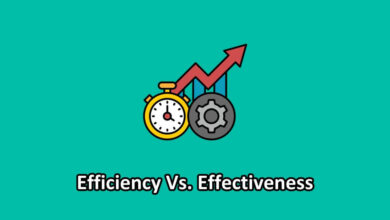Difference Between Probability And Non-Probability Sampling(With Table)
In statistics, sampling generally refers to the selection of a particular group or sample in order to represent the entire population. Mainly, there are two types of sampling i.e, probability sampling and non-probability sampling. In this article, we will understand the complete difference between these terminologies. The blog has the following main topics.
Our Readers Can Also Read the:
Definition Of Probability Sampling
In statistics, probability sampling generally refers to the sampling technique in which the subjects of the population get an equal chance to be a part of the sample. It means, in this type of sampling, each member of the population gets an equal opportunity to be selected as the representative sample.
Another word for probability sampling is random sampling. This methods generally follow the randomization principle which guarantees each and every member of the population has an equal selection chance or opportunity. Also, this method assists in reducing the possibility of bias.
Definition Of Non-Probability Sampling
On the other hand, non-probability sampling is the method of sampling wherein, it is not known, which subject from the population will get a chance to be selected as a sample. This means that in this type of sampling, all the members of the universe are not given a chance of becoming a part of the sample. Non-probability sampling has the following methods.
- Purposive or Judgement Sampling
- Quota Sampling
- Snowball Sampling
- Convenience Sampling
Probability Vs Non-Probability Sampling(Comparison Table)
| Basis For Difference | Probability Sampling | Non-Probability Sampling |
| Definition | It refers to the sampling method in which each subject has an equal chance of getting selected as the representative sample. | It refers to the sampling method where the sample/individual selected will be based on the factors like experience, judgments, and convenience of the investigator and not the probability. |
| Also Known As | Random Sampling | Non-Random Sampling |
| Based On | It is based on the probability | It is based on arbitrarily |
| Difficulty/Complexity | It is a simple sampling method | It is a somewhat complex sampling technique. |
| Biased Involved | Unbiased in nature | Biased involved |
| Chances Of Zero Or Null Probability | No chance of zero probability. | Zero probability can occur |
Key Differences Between Probability And Non-Probability Sampling
Some of the key differences between probability vs non-probability sampling are as follows.
- In statistics, probability generally refers to the sampling technique in which the subjects of the population get an equal chance to be a part of the sample. On the other hand, non-probability sampling is the method of sampling wherein, it is not known, which subject from the population will get a chance to be selected as a sample.
- Since the basis of probability sampling is randomization or opportunity, it is also known as random sampling. On the other hand, Non-probability sampling is not based on a randomization method for selecting a sample and so, it is also known as non-random sampling.
- The chances and opportunities of selecting individuals in random sampling are fixed and known. On the other hand, the selection probability in non-random sampling is zero.
- While probability sampling has unbiased results, the results of non-probability sampling are more or less biased.
- Probability sampling generally tests the hypothesis, and non-probability sampling on the other hand generates it.
Conclusion
So with the above discussions and explanations, we can conclude that both probability and non-probability sampling are the two main types of sampling. In statistics, probability generally refers to the sampling technique in which the subjects of the population get an equal chance to be a part of the sample. Probability sampling generally tests the hypothesis, and non-probability sampling on the other hand generates it.



